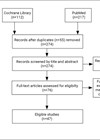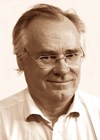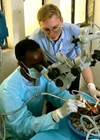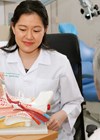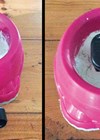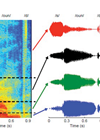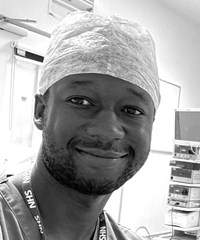ENT features
Intratympanic steroids in Ménière's disease: what’s the evidence?
The days of drastic surgery for Ménière's disease are long gone. We know that intratympanic injections can deliver high doses of medication to the inner ear with minimal discomfort and minimal risk. But how do we choose from the myriad...
Genomic testing for deafness and its implications
Gene therapies for hearing loss are rapidly advancing and will be transitioning to clinical practice. Here, the authors explain why clinicians involved in managing these disorders need to be aware of these advances. Genomic testing in England was significantly reconfigured...
Lancet Commission on Hearing Loss
The Lancet Commission on Hearing Loss was convened in 2019, and its main report will be published in 2023. We learn more about it here. The Lancet Commission on Hearing Loss was convened in 2019, and was charged by Richard...
In conversation with Prof Helge Rask-Andersen: on cell regeneration and treatment of human deafness
Helge Rask-Andersen, head of the inner ear research laboratory at the University of Uppsala in Sweden, has many achievements to his name. He was made an Honorary Member of ENT UK earlier this year. Gerry O’Donoghue caught up with him...
Outreach to build capacity for surgical ear care in low-resource settings: challenges and opportunities
There are successful models for delivering complex ear surgery where resources may be more limited. Ear, nose and throat conditions are frequently overlooked when global health issues are considered, but hearing loss is the world’s most common sensory deficit, and...
Using tele-audiology in Zambia’s ear and hearing care desert
Addressing the medical desert with tele-audiology and tele-education. If a ‘medical desert’ is defined as a community that lives more than 60 miles away from the nearest acute care hospital, then try to imagine an appropriate term for a situation...
Barrier and opportunities for hearing care: finding a way forward for all
Ideal models of care for communities can include tailored ear and hearing care interventions. Barriers exist at an individual and societal level to realise the vision of hearing care for all, regardless of country or resource setting. Affordability of hearing...
COVID-19 innovations
The coronavirus pandemic has mobilised medical innovators in an amazing way. We take a look at just a few of the hundreds of innovative products and techniques that have been developed and used in the last few weeks. Some of...
Addressing ear and hearing care through task sharing: the Malawian experience
How can ear and hearing care be addressed in a setting with limited resources? Wakisa Mulwafu, Chris Prescott and Johan Fagan present an innovative model for training ear surgery technicians to perform endoscopic myringoplasty under local anaesthesia on a large...
Acoustic shock: definitions and clinical aspects
Acoustic shock, a previously little-known and poorly understood clinical entity, came to the public’s attention in 2019 due to a high-profile legal case of a musician at the Royal Opera House. In this fascinating article, Andrew Parker and William Parker...
Cochlear implants: recipient stories
The most powerful evidence for the remarkable achievements made with cochlear implants over 40 years comes from the life-changing, personal stories of those who have benefited from the technology. James Rylance I first noticed a problem with hearing when I...
Improving cochlear-implant performance in the short- and medium-term
Can bespoke cochlear implant programming strategies reduce the variability seen in patient performance with an implant? Bob Carlyon reviews the current situation and gives us a glimpse of the future. Although many cochlear implant (CI) patients understand speech well in...


